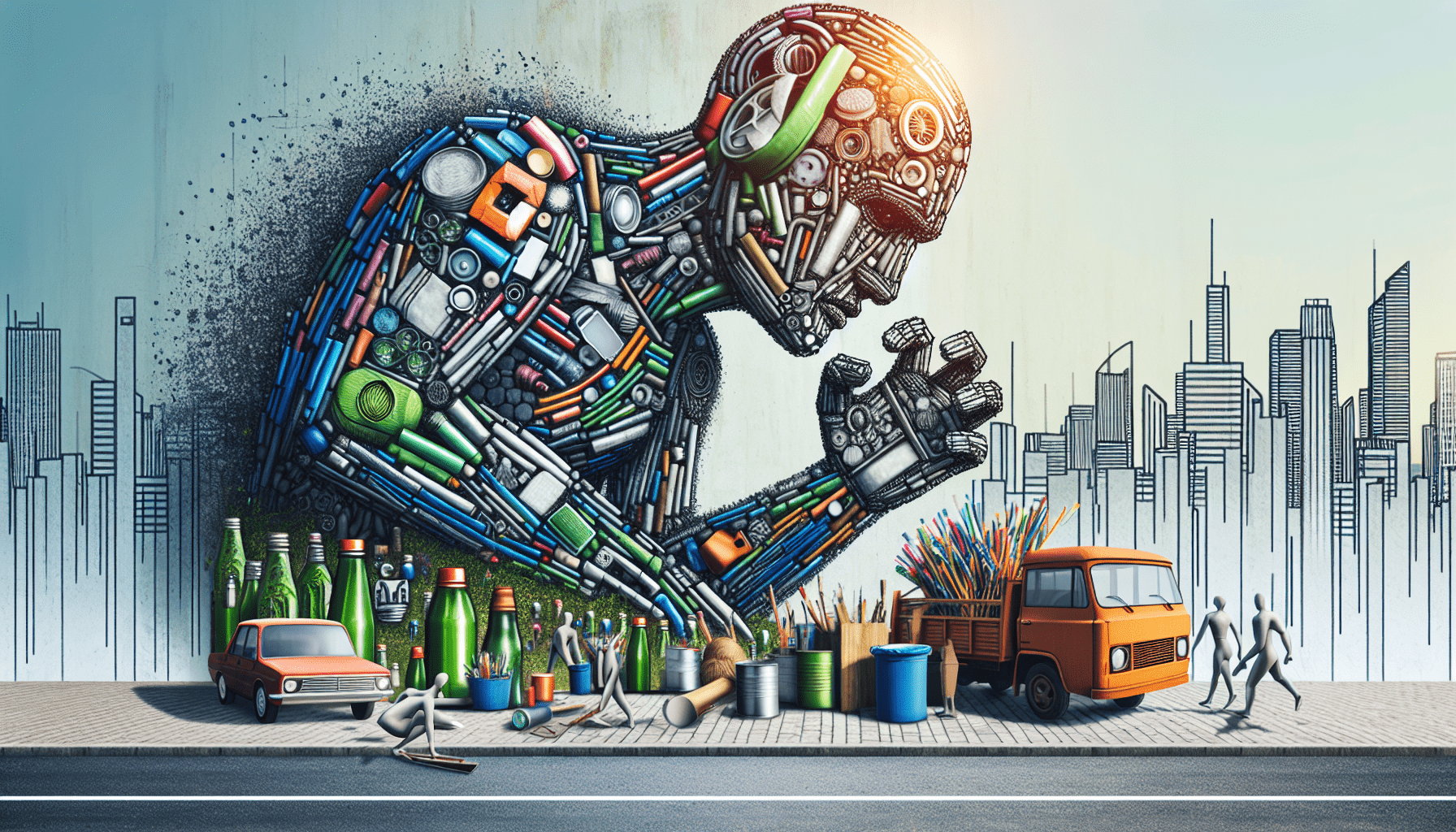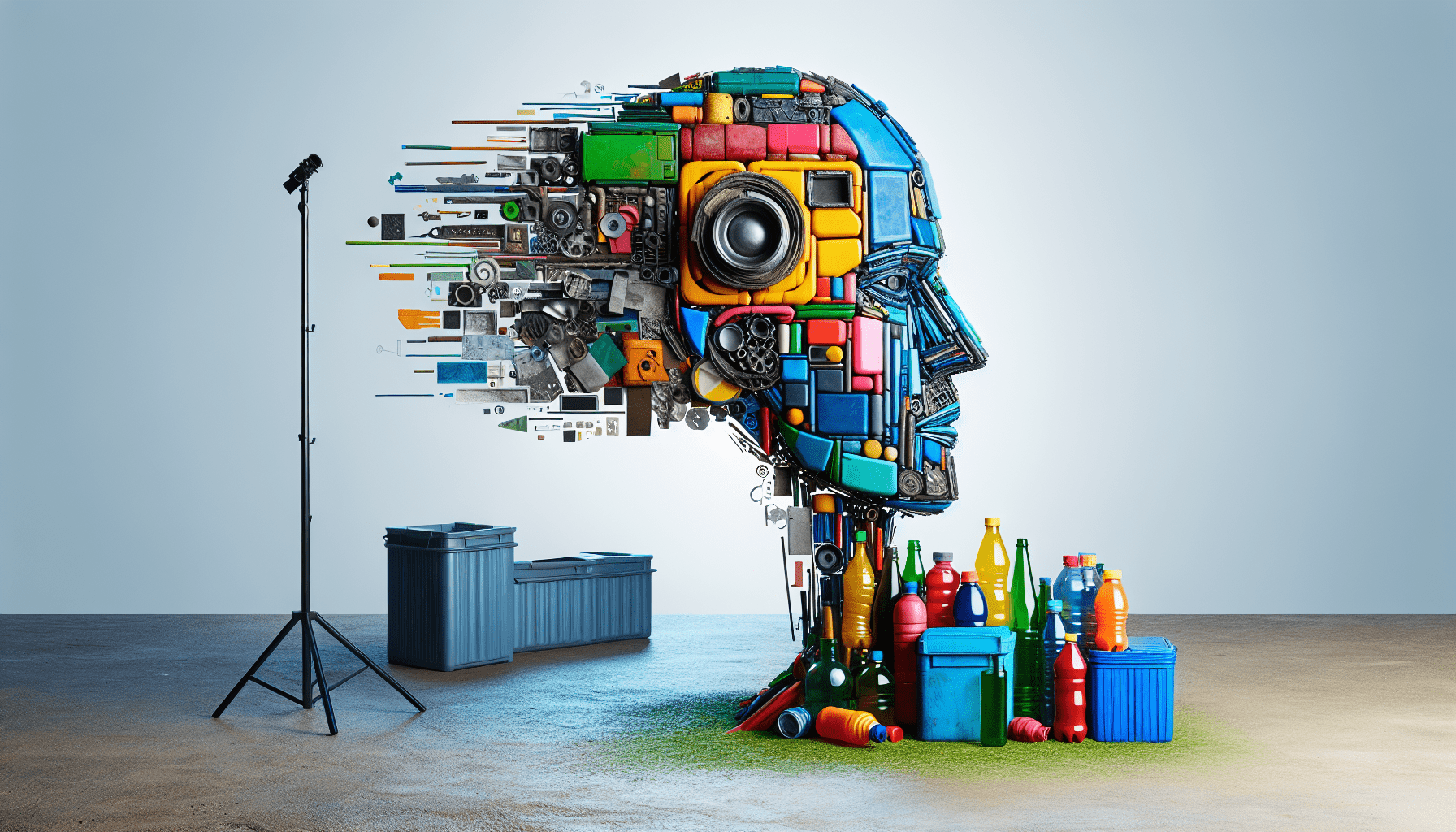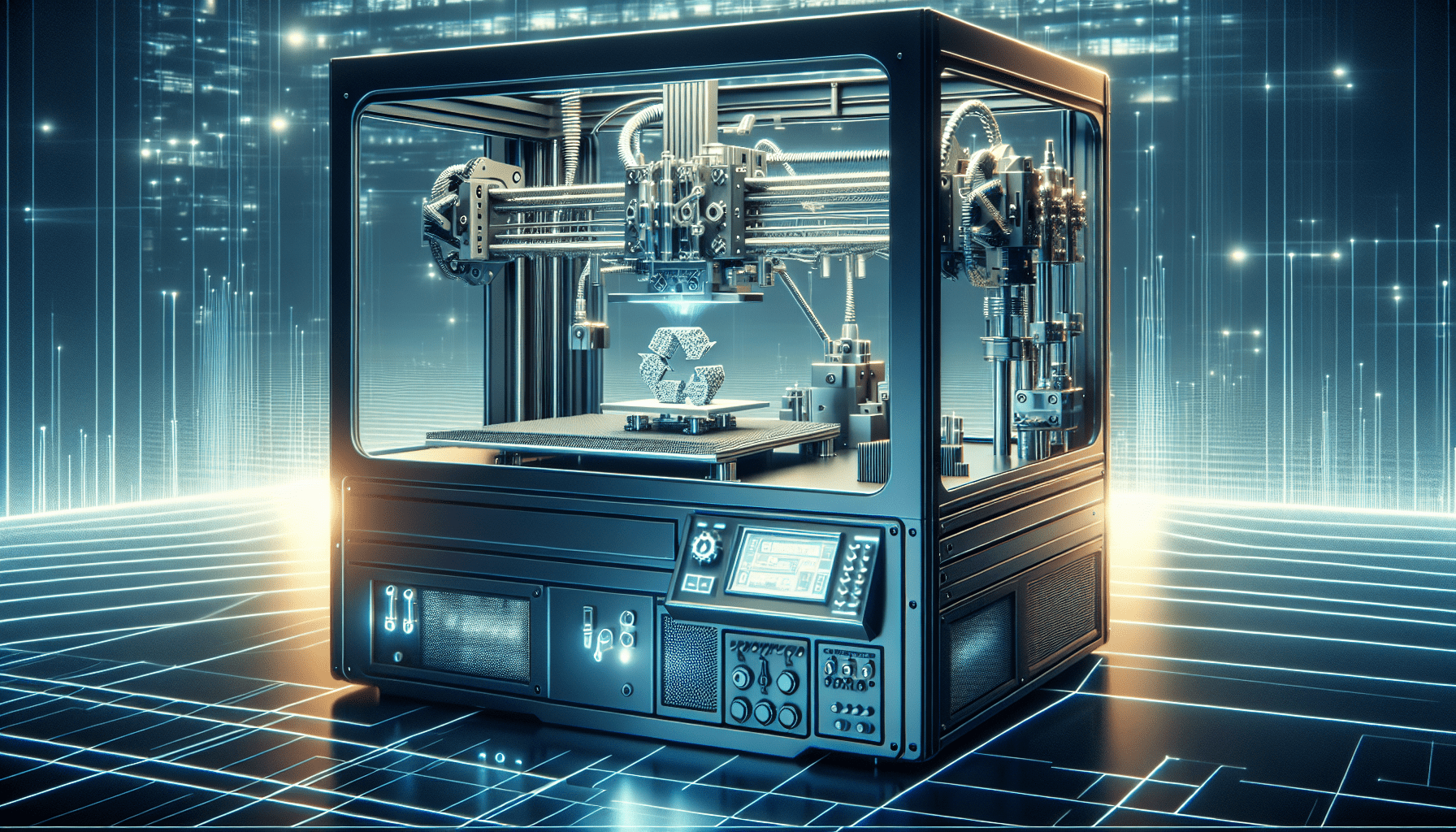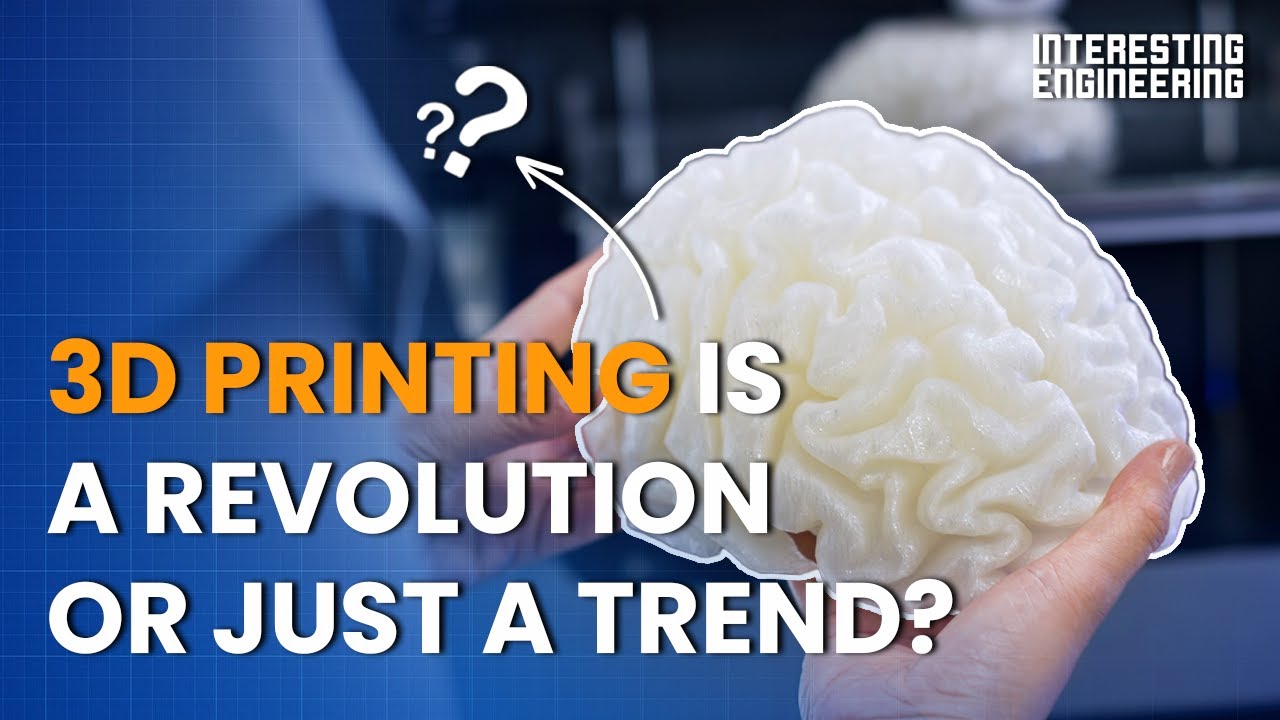Bambu Lab A1 Mini 3D Printer, Support Multi-Color 3D Printing, Set Up in 20 Mins, High Speed & Precision, Full-Auto Calibration & Active Flow Rate Compensation, ≤48 dB Quiet FDM 3D Printers
$399.00 (as of May 29, 2025 10:56 GMT +00:00 - More infoProduct prices and availability are accurate as of the date/time indicated and are subject to change. Any price and availability information displayed on [relevant Amazon Site(s), as applicable] at the time of purchase will apply to the purchase of this product.)How often do you think about where your waste goes after you dispose of it? Does it simply vanish into nothingness, becoming someone else’s problem? As cities continue to grow and produce staggering amounts of waste, the challenge of waste management has become increasingly critical. However, innovative minds are finding creative ways to repurpose this waste and give it a second life—often transforming the undesirable into something truly spectacular. Imagine turning urban waste into public art; 3D printing technology is making this a reality.

$30 off $400+ Anycubic Products with code AC30OFF
Introduction to 3D Printing in Public Art
3D printing, or additive manufacturing, has broken new ground in art and design. The ability to create complex structures layer by layer from a digital file opens a multitude of possibilities, especially for public art. One such inspiring project uses 3D printing to craft public sculptures from urban waste, turning discarded materials into something beautiful, meaningful, and enduring.
The Italian Pioneer: R3Direct
Italian company R3direct is at the forefront of this innovative movement. Specializing in repurposing post-consumer plastic, R3direct has recently made headlines with a large-scale 3D printed art project in Florence, Italy. Collaborating with WASP (World’s Advanced Saving Project), a renowned 3D printing firm, they created a massive equine monument in Parco San Salvi, a former psychiatric hospital.
The Project: Marco Cavallo of the XXI Century
The centerpiece of this project, named “Marco Cavallo of the XXI Century,” is a colossal horse sculpture by artist Edoardo Malagigi. The inspiration derives from the original Marco Cavallo sculpture of 1973, which served as a mascot for mental health initiatives. The new version draws from Leonardo da Vinci’s unbuilt equestrian designs, blending historical, cultural, and social narratives.
Materializing the Vision
What makes this sculpture remarkable is its material—urban waste. Constructed from recycled post-consumer waste, the sculpture symbolizes the burden of pollution and waste we impose on our environment. The transformation of waste into art resonates with the principles of the circular economy, where materials are continuously recycled and repurposed.
WASP’s Technological Prowess
To bring this ambitious project to life, R3direct enlisted the help of WASP’s advanced 3D printing systems. Using their 3MT HDP pellet 3D printers, which boast a generous print volume of up to 1000 x 1000 mm, they managed to create the horse in separate sections. These sections were then assembled on a lightweight metal frame for added stability, ensuring the sculpture stood tall and proud.
The Process and Collaborations
The 3D printing process involved using pellets made locally by recycling company Revet. These pellets, derived from post-consumer plastic waste, were fed into the 3D printers to build the sculpture layer by layer. Once printed, the sections were transported to Parco San Salvi, where they were assembled and unveiled as a permanent exhibit.
Beyond Traditional Artistic Materials
Italy is world-renowned for its artistic heritage, typically embodied in bronze and marble sculptures. This project signifies a radical shift from these traditional materials, focusing instead on an abundant, albeit less glamorous, resource—waste. As WASP aptly puts it, our modern “mountains” of waste can be mined for valuable raw materials without further harming the environment.
A New Approach to Waste Management
3D printing public art from urban waste isn’t just an artistic endeavor; it’s a statement on sustainability and waste management. As urban populations grow, so does the waste they generate. Traditional disposal methods, such as landfilling and incineration, are not sustainable long-term solutions. Creative reuse of waste through technologies like 3D printing provides an innovative, eco-friendly alternative.

Buy Photon Mono M5 Get Free 1KG Resin
WASP’s Broader Vision
WASP’s technological capabilities extend beyond plastic waste. They are also developing large-format 3D printing technologies that can process organic materials like locally sourced clay. One significant project involves partnering with the United Nations Development Program (UNDP) in Colombia to build structures using local materials, further demonstrating the versatility and potential of 3D printing in sustainable development.
A Broader Context: Sustainability and 3D Printing
To put this all into perspective, let’s step back and consider the broader implications of sustainability in 3D printing.
Table: Benefits of 3D Printing for Sustainability
| Benefit | Description |
|---|---|
| Reduced Waste | Traditional manufacturing often results in excessive waste. 3D printing is an additive process, meaning materials are only used where needed. |
| Material Versatility | 3D printers can process a variety of materials, including recycled plastics and organic materials, promoting the circular economy. |
| Localized Production | 3D printing can be done on-site, reducing the carbon footprint associated with transporting materials and finished products. |
| Customization | The technology allows for highly customized designs, minimizing the need for standardized mass production and reducing surplus inventory. |
| Energy Efficiency | Advanced 3D printing technologies, like those used by WASP, consume less energy compared to some traditional manufacturing processes. |
The Circular Economy and 3D Printing
Integrating 3D printing into the circular economy represents a holistic approach to sustainability. By continuously recycling and reusing materials, we can significantly reduce waste and limit the extraction of new raw materials. This aligns closely with the principles of zero waste, striving to create a sustainable balance between consumption and preservation.
Technological Innovations Driving the Change
Advancements in 3D printing technology are vital to achieving these sustainability goals. Companies like WASP are leading the way with large-format printers capable of processing irregular-sized pellets and various materials. These innovations enable the creation of large-scale projects like the Marco Cavallo of the XXI Century, demonstrating the potential to repurpose waste on a grand scale.
Social and Cultural Significance
Public art has always been a mirror reflecting the society it arises from. By using waste materials to create something beautiful and meaningful, projects like Marco Cavallo of the XXI Century carry a profound social and cultural message. They challenge us to reconsider our relationship with waste, turning the spotlight on sustainability and environmental responsibility.
Educational Impact
Another critical aspect of these projects is their educational value. Public installations made from recycled materials can serve as powerful educational tools, raising awareness about waste management, sustainability, and the potential of technological innovations like 3D printing. Schools, universities, and communities can learn a great deal from such initiatives.
Future Possibilities
As technology continues to advance, the possibilities for 3D printing public art from urban waste are virtually limitless. Imagine entire parks filled with sculptures made from recycled materials, each telling a unique story about our collective effort to protect the environment. The potential for creating functional structures—like park benches, playground equipment, and even buildings—using 3D printing technology is also enormous.
The Role of Policy and Support
To fully realize this potential, policy support and public-private partnerships are indispensable. Governments can play a crucial role in promoting the use of recycled materials in public projects by providing funding, creating incentives, and setting regulatory standards.
Collaborations and Community Engagement
Success stories like the Marco Cavallo of the XXI Century project highlight the importance of collaboration. By teaming up with artists, tech companies, recycling firms, and local communities, such projects become more sustainable and impactful. Engaging the community not only fosters a sense of ownership and pride but also encourages better waste management practices at the grassroots level.
Conclusion: A New Dawn for Waste and Art
As we stand at the crossroads of tradition and innovation, it’s inspiring to see how projects like 3D printing public art from urban waste can pave the way for a more sustainable and beautiful world. They remind us that even in a world often burdened by waste and pollution, creativity and technology can coalesce to create something that uplifts the human spirit and promotes environmental responsibility.
Further Reading and Resources
For those interested in learning more, numerous resources are available. WASP and R3direct provide comprehensive insights into their innovative projects. Additionally, literature on sustainable practices and the circular economy offers valuable context and understanding.
| Resource | Details |
|---|---|
| WASP’s Official Website | Explore their range of 3D printing technologies and case studies on their projects. |
| R3direct | Learn more about their mission to repurpose post-consumer plastic for meaningful projects. |
| Books on the Circular Economy | Titles like “The Circular Economy: A Wealth of Flows” by Ken Webster offer in-depth perspectives on sustainable practices. |
| Sustainability Journals | Academic journals and papers on sustainable development and waste management provide rigorous analysis and discussions on the topic. |
| Educational Workshops and Seminars | Participate in workshops that focus on sustainable practices and technologies like 3D printing to gain hands-on experience and knowledge. |
By integrating technology, creativity, and sustainability, we can rewrite the narrative of urban waste, transforming it from a problem to a resource—one innovative, 3D-printed sculpture at a time. You have the power to support and advocate for such changes in your communities, helping to build a future where waste is not just discarded, but reimagined and repurposed into art that enriches public spaces and our lives.
$30 off $400+ Anycubic Products with code AC30OFF








